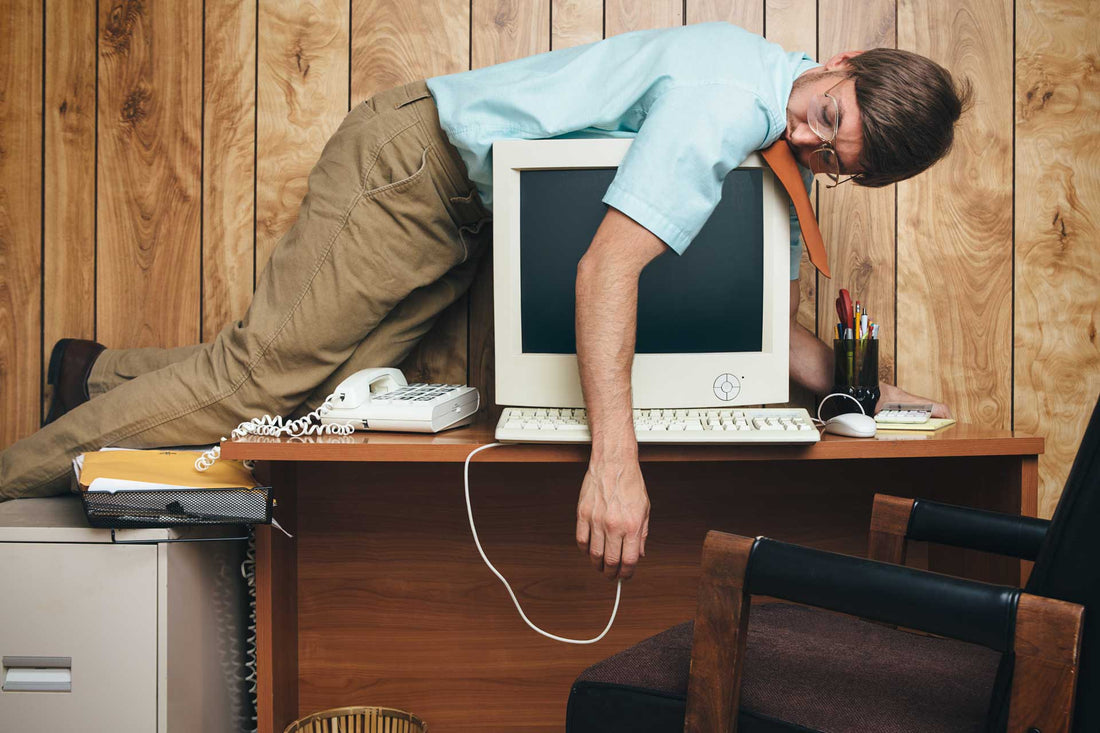
Are You Taking Breaks Wrong? Here’s How to Fix It.
Share
It doesn’t take a doctor to know that sitting at a desk behind the keyboard for eight hours straight isn’t a great idea. Whether you’re in an office cubicle, a library desk, or the comfort of your in-home office, you can’t stay in the same spot all day. By the second hour you know it’s time to get up and get some blood flowing. You love an excuse to take a break, but are you doing it wrong? Here’s how to fix it.
If you want to help your brain out, you need to give it variety. An effective way to boost your breaks is by separating them into three different categories: social, physical, and spiritual.
1. The Social Break: Connect and Recharge
Why it's important:
- Reduces Stress: Sharing a laugh or a brief conversation can lighten your mood.
- Broadens Perspective: Discussing non-work topics can offer a mental escape and boost creativity.
- Combats Isolation: Essential for remote workers who might miss in-person interactions.
Examples of Social Breaks:
- Call Your Mom (10-15 minutes): It’s never not a good idea. She’d love it.
- Virtual Coffee Chat (10-15 minutes): Schedule a quick video call with a colleague or friend to talk about anything but work.
- Team Lunch (30-60 minutes): If in the office, grab lunch with co-workers. If working from home, schedule a virtual lunch break with friends or family.
- Casual Chat (5 minutes): A quick chat with an office mate at the water cooler or a brief text exchange with a loved one.
2. The Physical Break: Move Your Body, Relieve Your Mind
Prolonged sitting can lead to stiffness, fatigue, and contribute to issues like wrist pain and even carpal tunnel syndrome if your desk ergonomics aren't optimal. Physical breaks are all about movement and giving your body a much-needed reset.
Why it's important:
- Boosts Circulation: Gets blood flowing, reducing stiffness.
- Reduces Strain: Alleviates pressure on muscles and joints, especially in the neck, shoulders, and wrists.
- Increases Energy: A quick burst of activity can wake you up more effectively than a lousy cup of coffee.
Examples of Physical Breaks:
- Quick Stretches (5 minutes): Stand up and do some gentle neck rolls, shoulder shrugs, and arm circles. Don't forget desk stretches for your hands and wrists – simple wrist rotations and finger stretches can make a huge difference.
- Walk Around (10-15 minutes): Step outside for some fresh air, walk to another room, or even just pace around your living room. The change of scenery is an added bonus.
- Light Exercise (15-20 minutes): If time allows, a short burst of yoga, push-ups, or bodyweight squats can significantly boost your energy and focus.
- Rearrange your setup (10 minutes): Move your lamp to the other side of your computer, rearrange your decorations, or even online shop for a new desk toy.
- Hydration/Snack Run (5 minutes): Get up to refill your water bottle or grab a healthy snack. This small movement also helps with hydration and sustained energy.
3. The Spiritual Break: Mindful Moments for Inner Peace
This isn't necessarily about religion, but about nurturing your inner self, finding moments of calm, and connecting with your values and purpose. Spiritual breaks help you clear mental clutter and return to work with greater clarity and focus.
Why it's important:
- Reduces Mental Fatigue: Gives your brain a rest from constant problem-solving.
- Increases Self-Awareness: Helps you check in with your emotional state.
- Enhances Creativity: A calm mind is a more creative mind.
Examples of Spiritual Breaks:
- Mindful Meditation (5-10 minutes): Find a quiet spot, close your eyes, and focus on your breath. Even a few minutes can significantly reduce stress. There are many guided meditations available online.
- Listen to Music (5-10 minutes): Put on some instrumental music or nature sounds and take a few deep breaths. Or, if you’re really needing it, put your guilty pleasure album on and turn the volume up a little louder than it should be.
- Journaling (10-15 minutes): Jot down thoughts, feelings, or ideas. It's a great way to process emotions and gain perspective.
- Nature Connection (10-20 minutes): If possible, step outside and simply observe your surroundings. Listen to the birds, feel the sun, or notice the trees.
-
Reading (15-20 minutes): Pick up a book (non-work related!) or an article that inspires you.
By strategically incorporating physical, social, and spiritual breaks into your routine, you'll not only boost your productivity but also cultivate a healthier, more sustainable approach to your work from home or office life. So, step away from that screen – your mind, body, and spirit will thank you!
Image by RyanJLane
